“I who say hello to you, it is I who welcome you into space and tell you I see you, I see you,“said Mark Bradford to those gathered at the opening of his new exhibition”You don’t have to tell me twiceat Hauser & Wirth’s 22nd Street Gallery (on view through July 28). Bradford’s warmth recalls his early days as a barber, when he waved every new client through the door.
Expressive and down-to-earth, Bradford, 57, is known for those moments of genuine connection, even as his work has become canon. In 2017, he represented the United States at the Venice Biennale, and in 2018, his painting Helter Skelter set a world record for the highest purchase price ever paid for a single work by a living African-American artist, when it sold at auction for $12 million including fees. Today, the new ‘landscapes’ unveiled at Hauser & Wirth underscore Bradford’s ongoing sense of experimentation, often offering a sense of revelation.
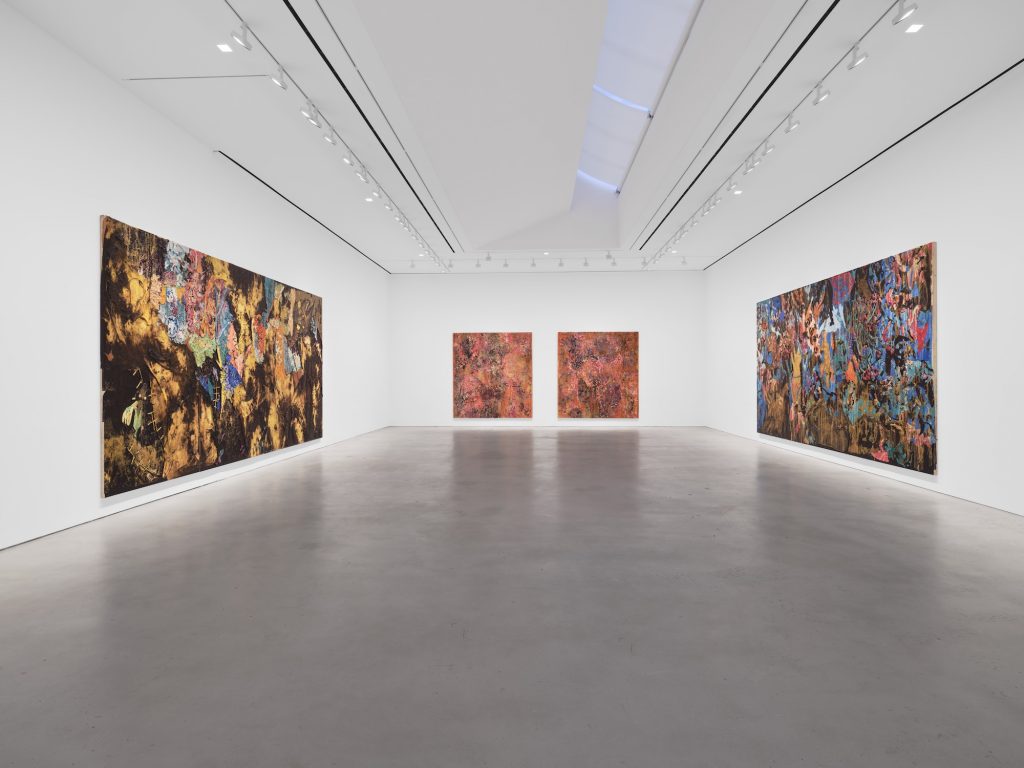
Installation view, “Mark Bradford. You don’t have to tell me twice”; Hauser & Wirth New York 22nd Street, April 13 – July 28, 2023 © Mark Bradford; Courtesy of the artist and Hauser & Wirth; Photo: Thomas Barratt
The exhibition at Hauser and Wirth is Bradford’s first solo show in New York since 2015 and brings together works from Bradford’s youth to his most recent creations and marks a milestone in his career. With this in mind, we have chosen what we consider to be 4 essential works of art in the exhibition that provide insight into his broader practice, whether you are familiar with Bradford’s work or are new to his practice. Continue reading to learn more.
Johnny the jaguar (2023)
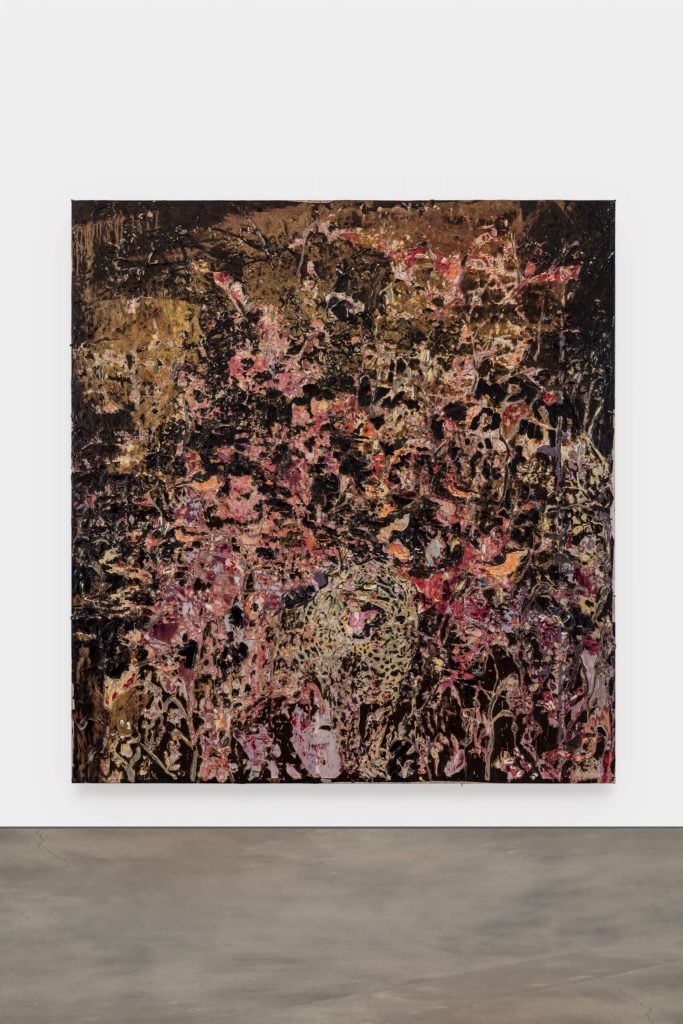
Mark Bradford, Johnny the jaguar (2023). Courtesy of the artist and Hauser and Wirth. Photograph by Joshua White.
Just the facts: The first floor of “You Don’t Have to Tell Me Twice” features a series of works which, according to Hauser & Wirth, are “informed by the history of European tapestry and their socio-political significance, as symbols of the greatest opulence”. of the European aristocracy and, by extension, their relationship to power. Originally created at the Fundação de Serralves in Porto in late 2021, these works accompany more recent “landscapes” resembling tapestries depicting the native flora and fauna of Blackdom – “a colony of African-American farmers from the early 20th century. century in New Mexico. At the center of these paintings is a “symbol of historical predation”, a large cat figure which Bradford affectionately nicknamed, Johnny the jaguar.
Knowledge: Bradford’s Johnny is very clearly the representation of a Pennsylvanianthera onca, the species of jaguar native to the Chihuahuan Desert in northern Mexico and the southwestern United States, and as such is appropriate for its multiplicity of changing meanings: it could not only serve as a symbol for historical predation, reminiscent of power and race structures in America and Western colonialism more broadly, but as a symbol of the elite jaguar warriors of the Aztec Empire. And yet, even more intriguingly, Pennsylvanianthera onca is also today, in fact, an endangered species, perhaps indicating a vision of the reduction, if not the end, of oppression.
fire fire (2021)
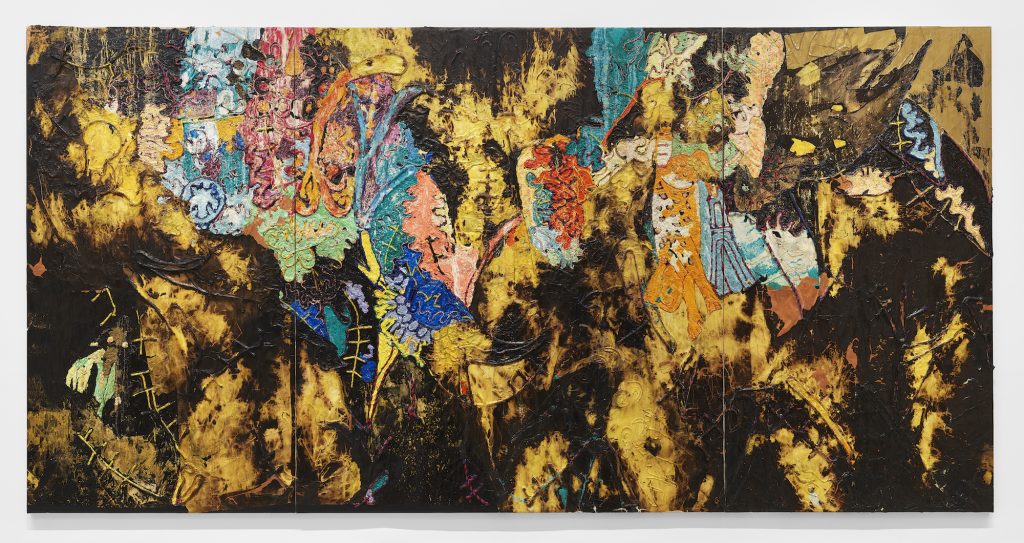
Mark Bradford, fire fire (2021). Photograph by Sarah Muehlbauer. Courtesy of the artist and Hauser and Wirth.
Just the facts: The works presented at Hauser & Wirth New York mark a shift in Bradford’s work, moving from his bird’s-eye views of cityscapes to eye-level allegories of “survival, violence and desire.” The figure, according to Hauser & Wirth, was “the starting point of [Bradford’s] abstraction.” Reflecting on these works, the artist himself clarifies, “I really wanted to create these kind of playful landscapes. … Maybe because there was so much pressure throughout Covid and challenging question who we are culturally and racially that i had to create sights in my own imagination to give me permission to play and move things around i always have to create a show to give me permission to screw things up a bit .
Knowledge: A huge job fire fire (2021) presents us with a dull, crusty top layer seemingly peeled off to reveal vibrant, colorful figures and shapes underneath., “I’m always thinking about how I can layer meaning, how can I create visual metaphor, how I be provocative in a way,” the artist said (at the vernissage?). In this case, it seems the purpose of this layering is to reveal the new life hidden beneath the scars of the disaster. “I I’m interested in the kind of beauty that comes out of trouble,” he explained, “…I want my work to be a catalyst for conversations about social justice and equality.”
Several brightly colored figures emerge from what appears to be the charred and blackened ashes of a vast, impersonally abstract conflagration: alongside deep teal, salmon and cobalt flowers emerges the stylized depiction of a human arm clutching a jaguar at upside down by its tail. As part of other works in the exhibition such as Jungle-Jungle And Johnny the jaguar, fire fire seems to testify to the hope of being delivered from the fiery chaos of life and our resulting fears. And yet he also brings with him his own terrors, for he is a pale arm that grasps the jaguar’s tale, implying that there may be more to fear than natural predation.
drop of death (1973)
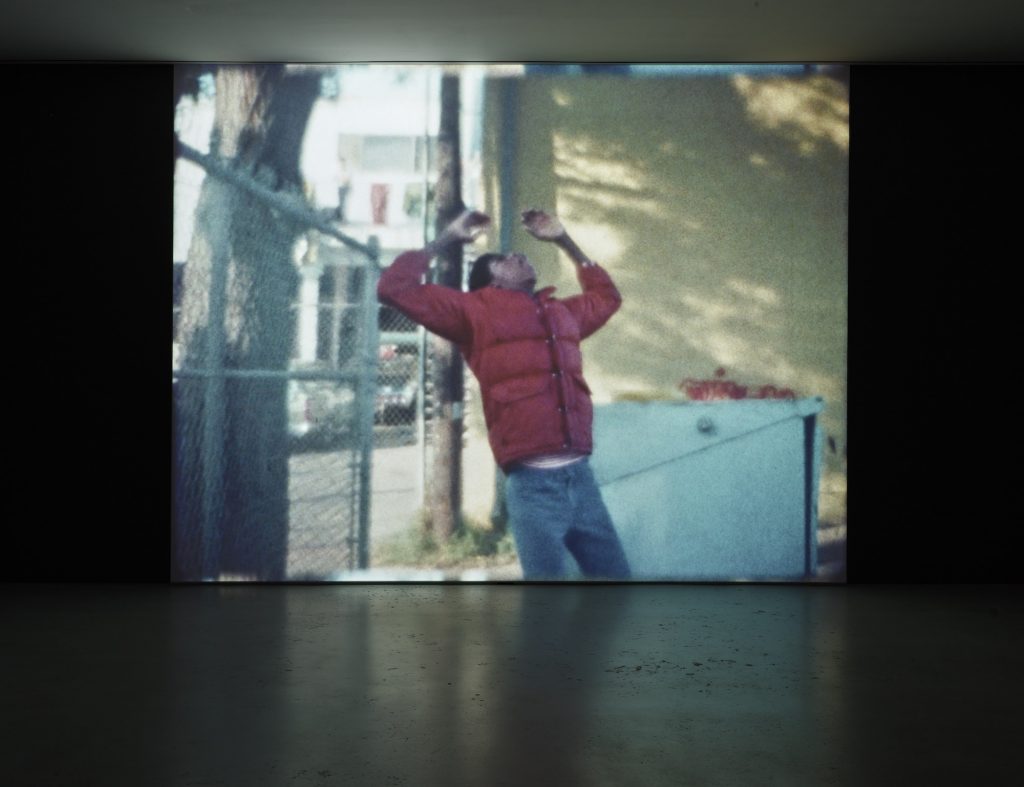
Mark Bradford, drop of death (1973). Courtesy of the artist and Hauser and Wirth. Photograph by Sarah Muehlbauer.
Just the facts: At the center of the second floor of the show is a looping projection screen of a Super 8 film made by Bradford when he was 12 years old. In it, the Bradford teenager falls backwards into a chain-link fence as he pretends to be hit by a bullet.
Knowledge: Bradford’s reflection on the film today is both inspiring and timely: “What’s important to me is that the kid straightens up. The fall is only one aspect, but the fact that he got back up is the journey.
drop of death (2023)
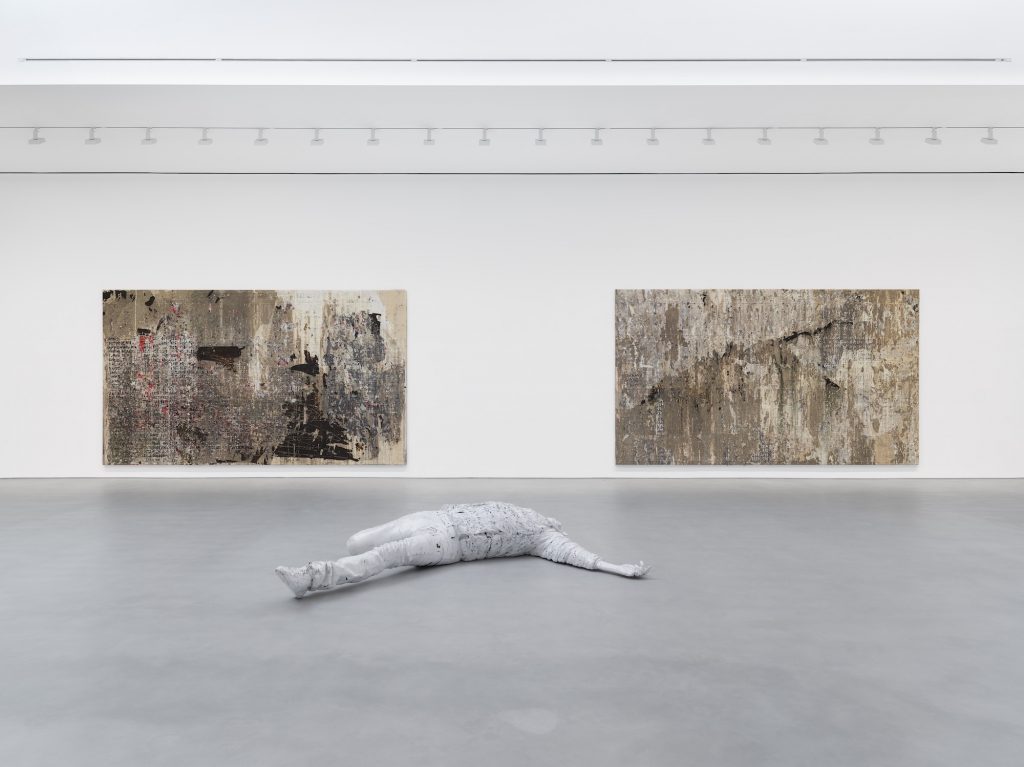
Mark Bradford, drop of death (2023). Courtesy of the artist and Hauser and Wirth. Photograph by Sarah Muehlbauer.
Just the facts: “For me, art is about connecting and building bridges between people,” Bradford said. He also insinuates a connection between his younger self and his current self. A sculptural installation on the fifth floor titled, Deathfall 2023 in many ways references his childhood film Drop of Death, 1973, in terms of violence and mortality considerations.
Knowledge: The artist also connects his art and the exhibition to a larger context through the pose and title of the sculpture, a “death drop” being a popular pose in gay ballroom culture. Thus, pointing to the intersection of persecution and performance, the installation becomes both personal reflection and social commentary. That’s what you can expect from Bradford. My work is always a response to what is happening in the world. It’s always about the here and now,” he said.
Follow Artnet News on Facebook:
Want to stay one step ahead of the art world? Subscribe to our newsletter to receive breaking news, revealing interviews and incisive reviews that move the conversation forward.
